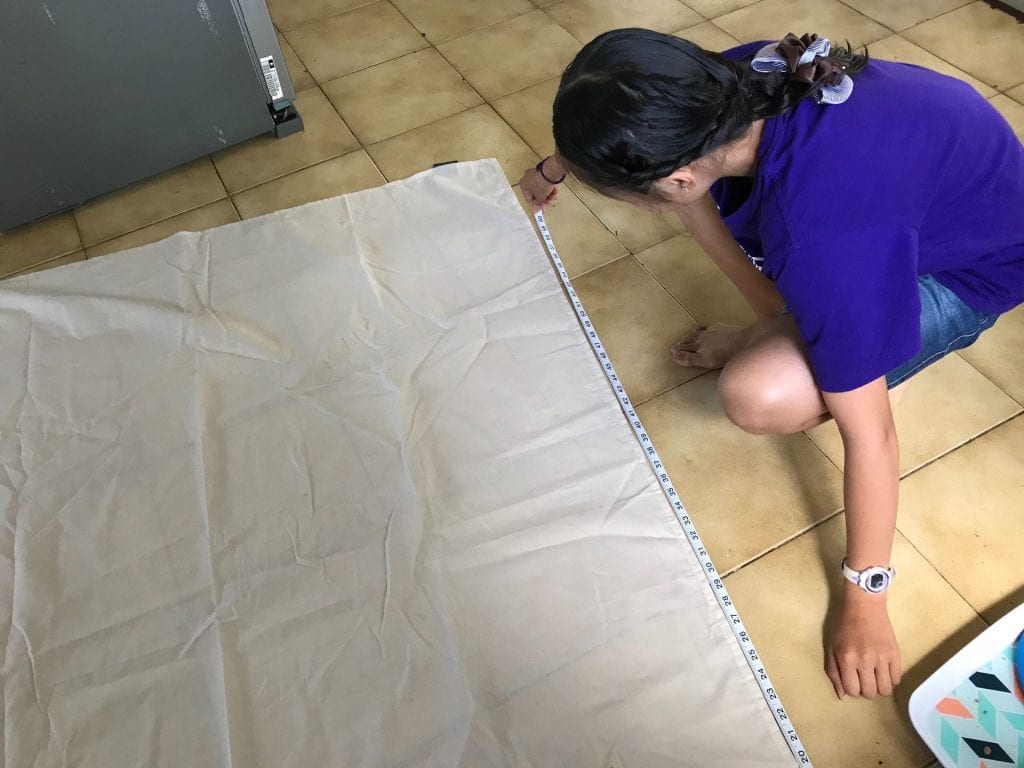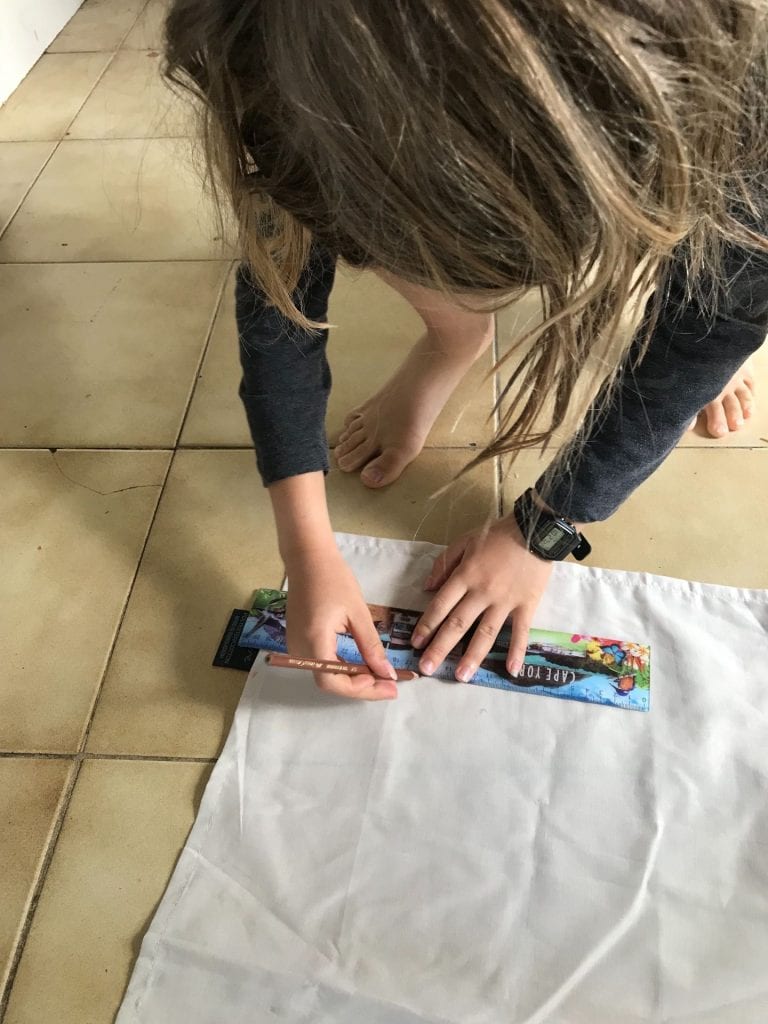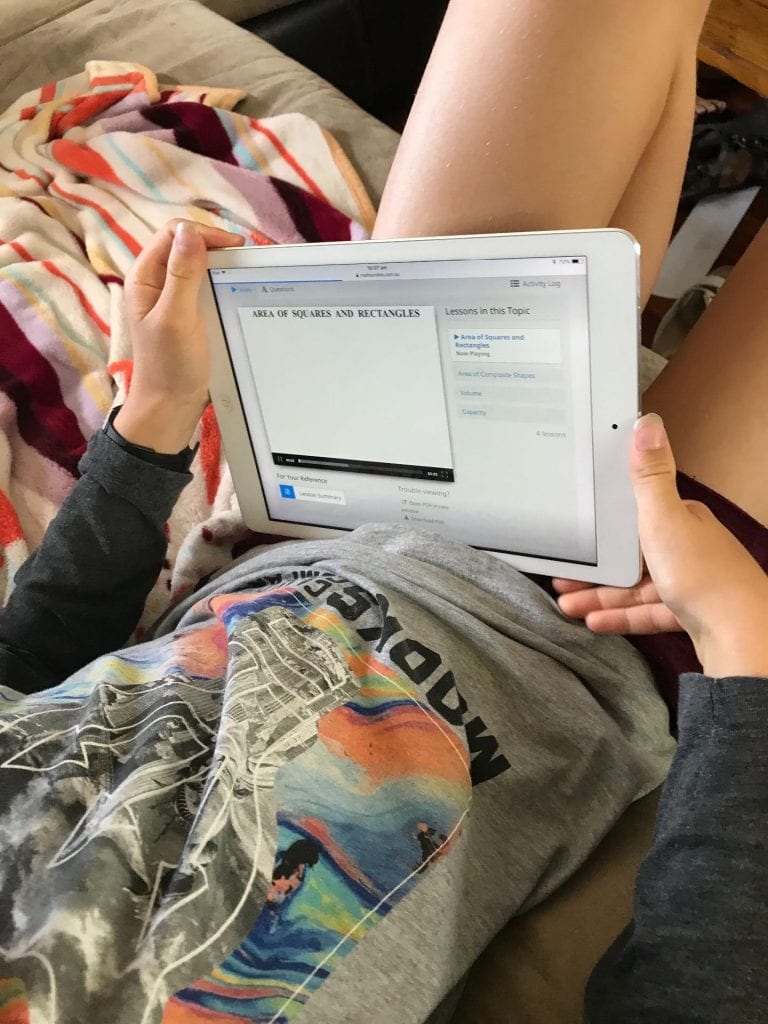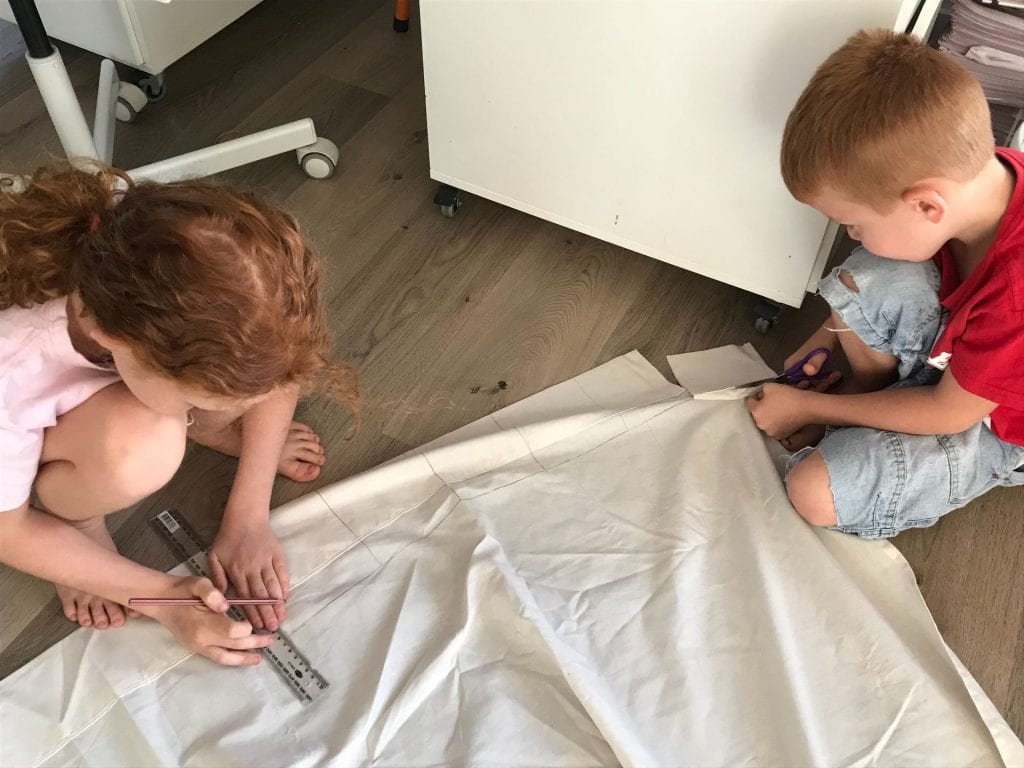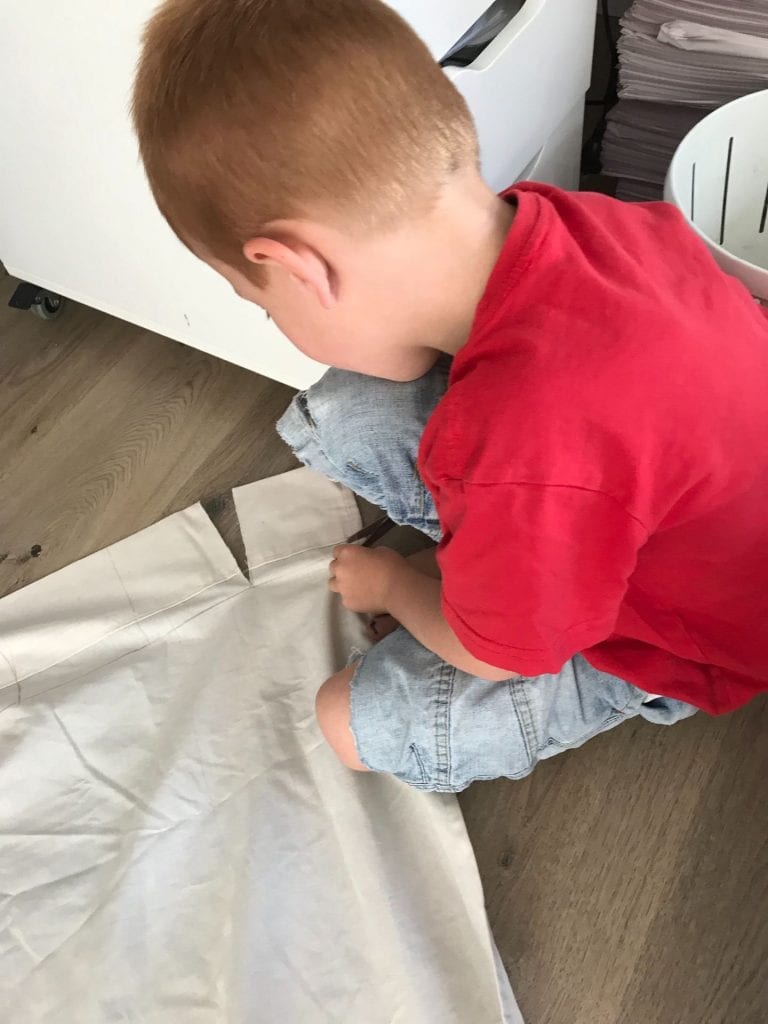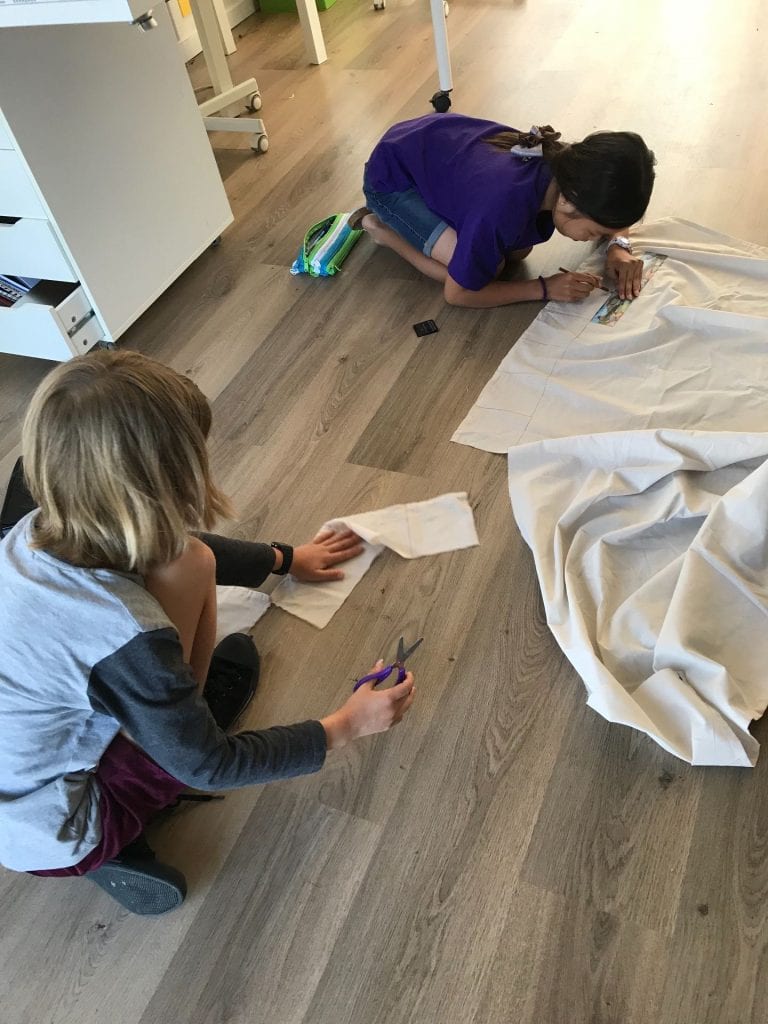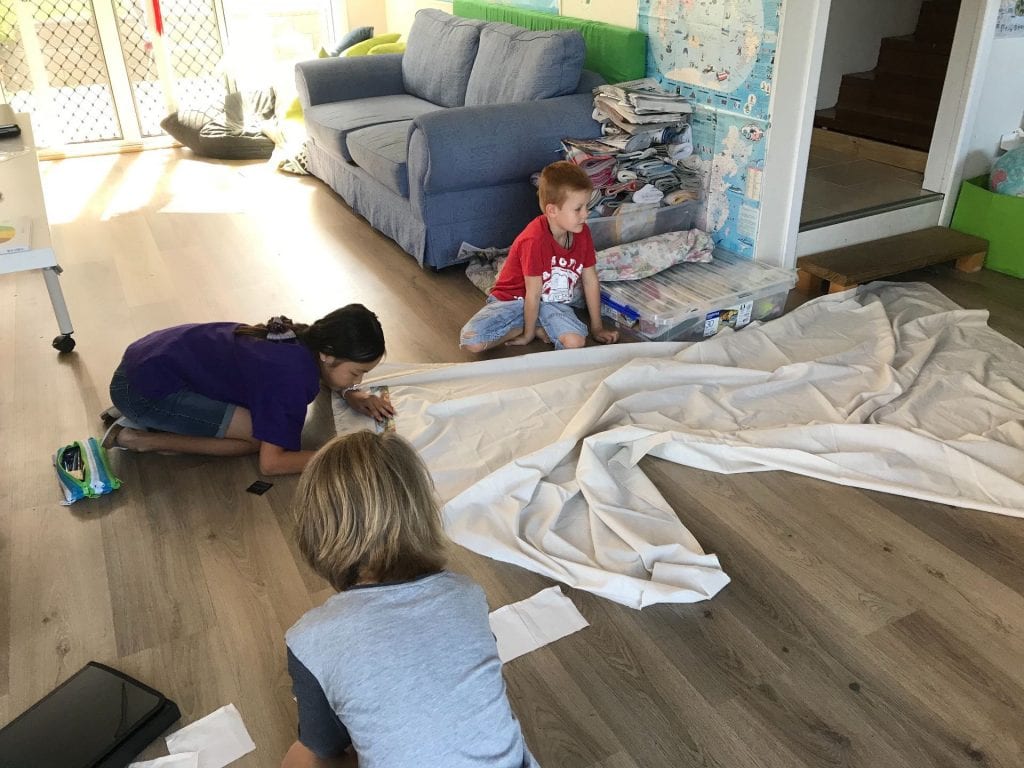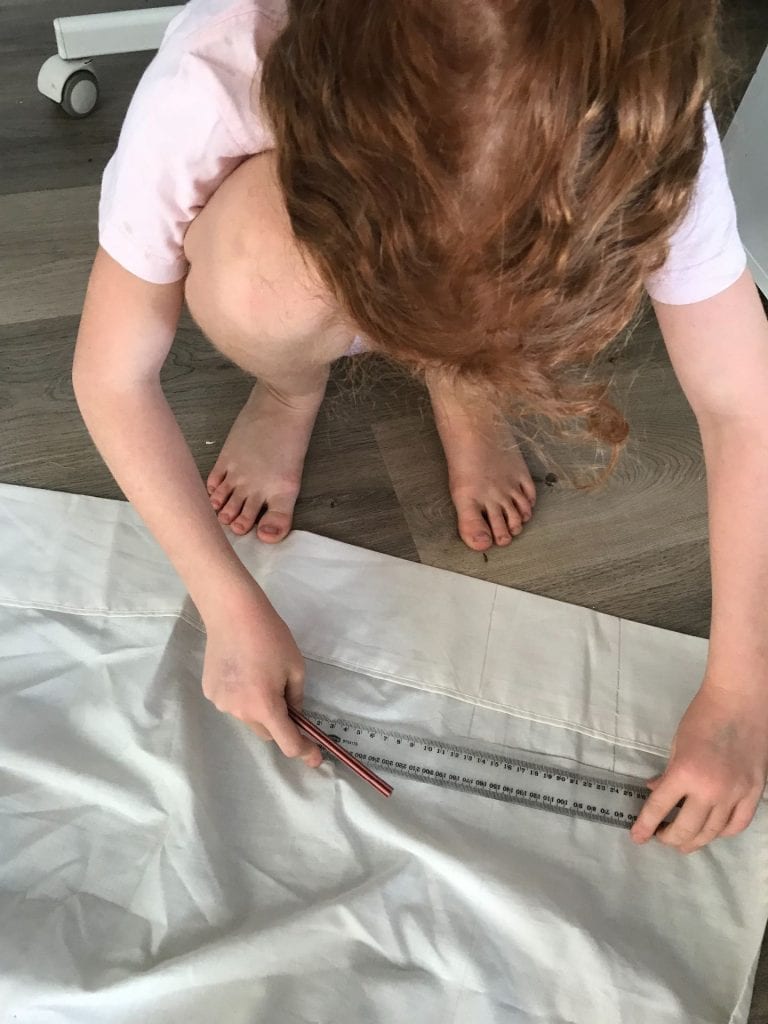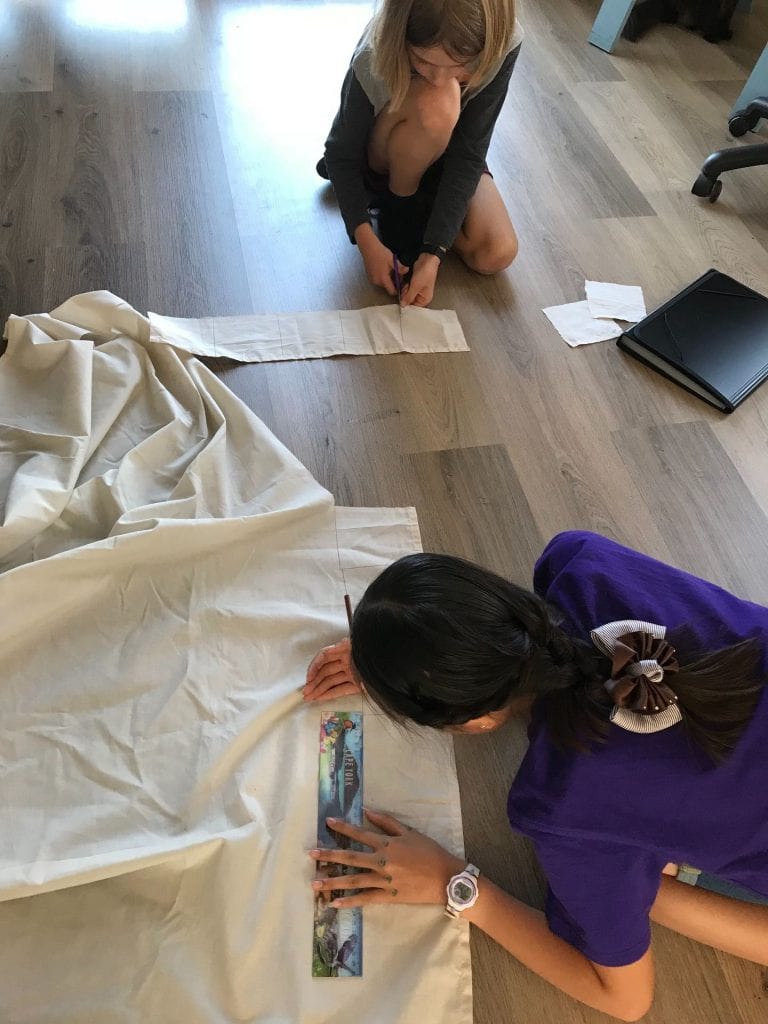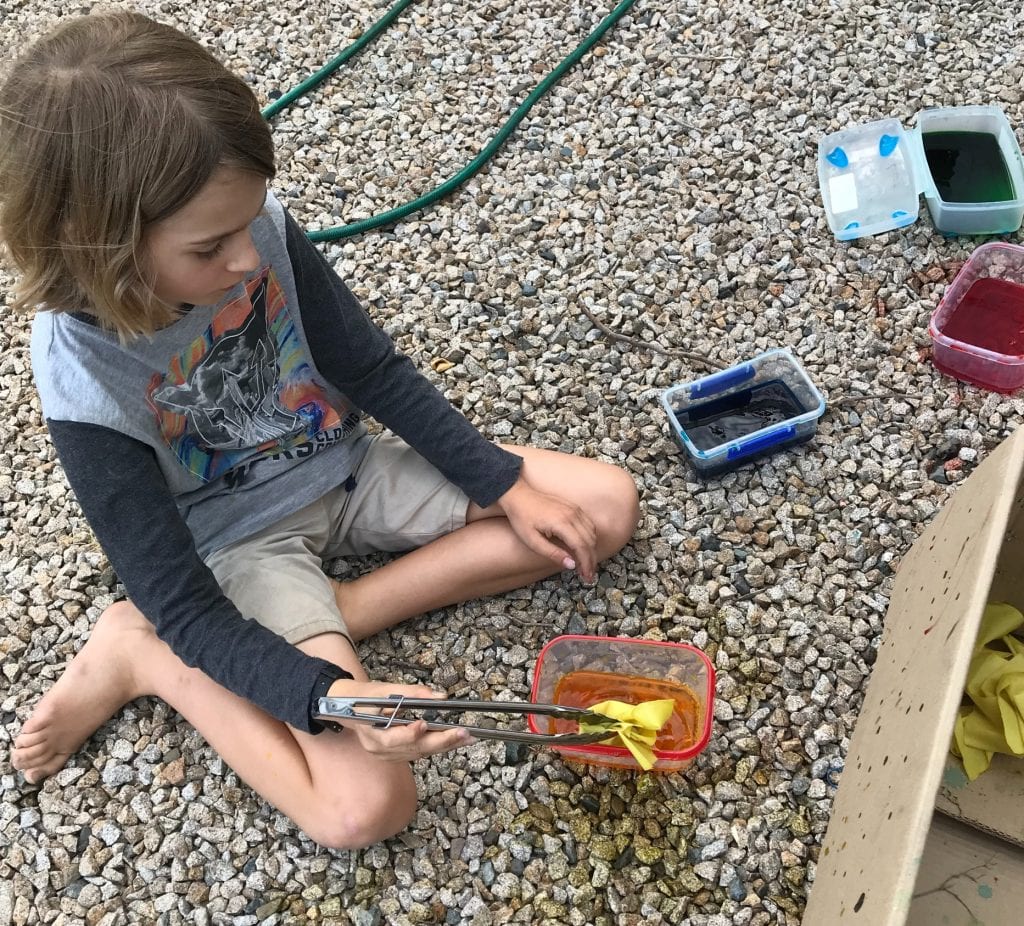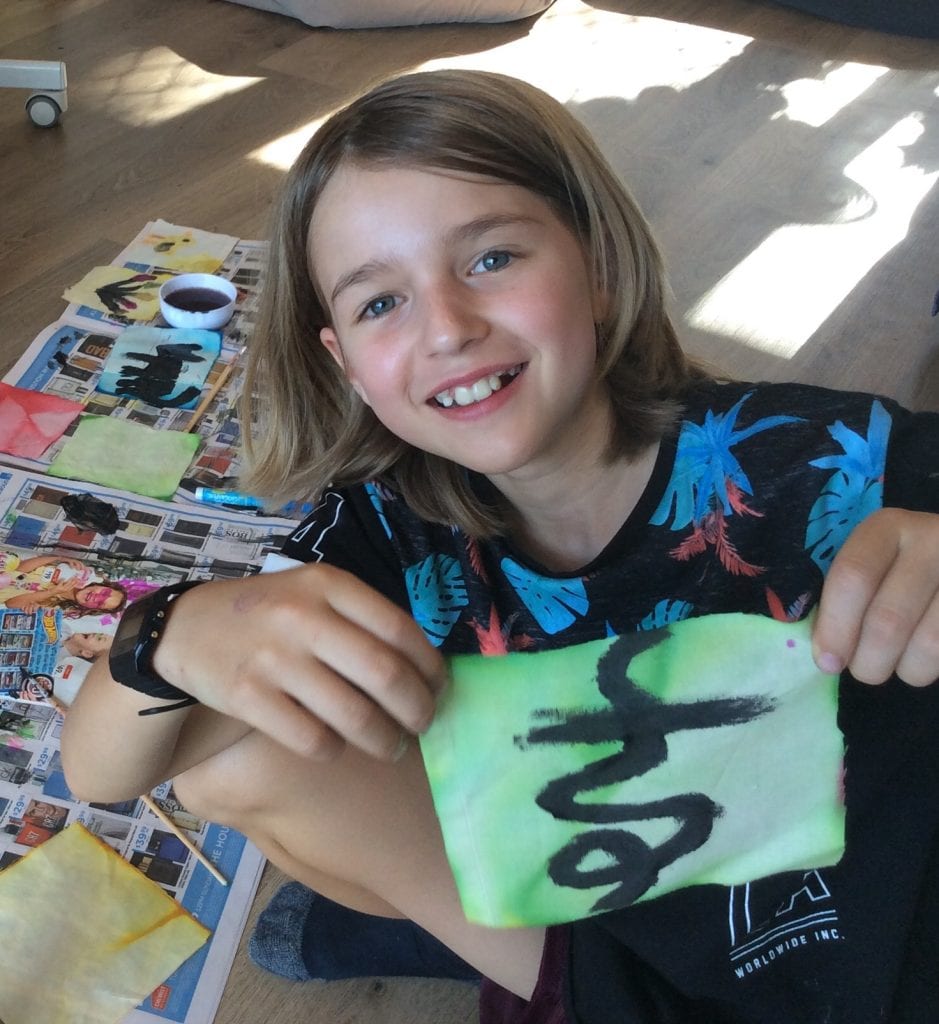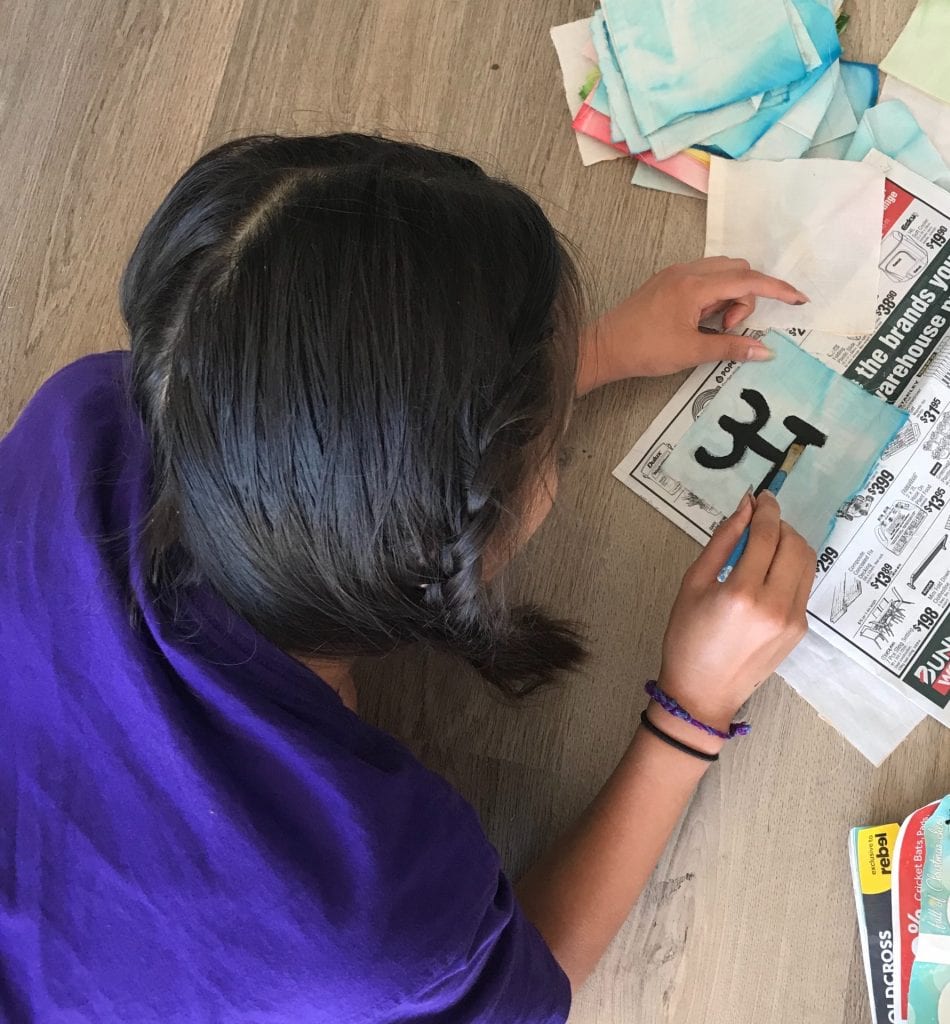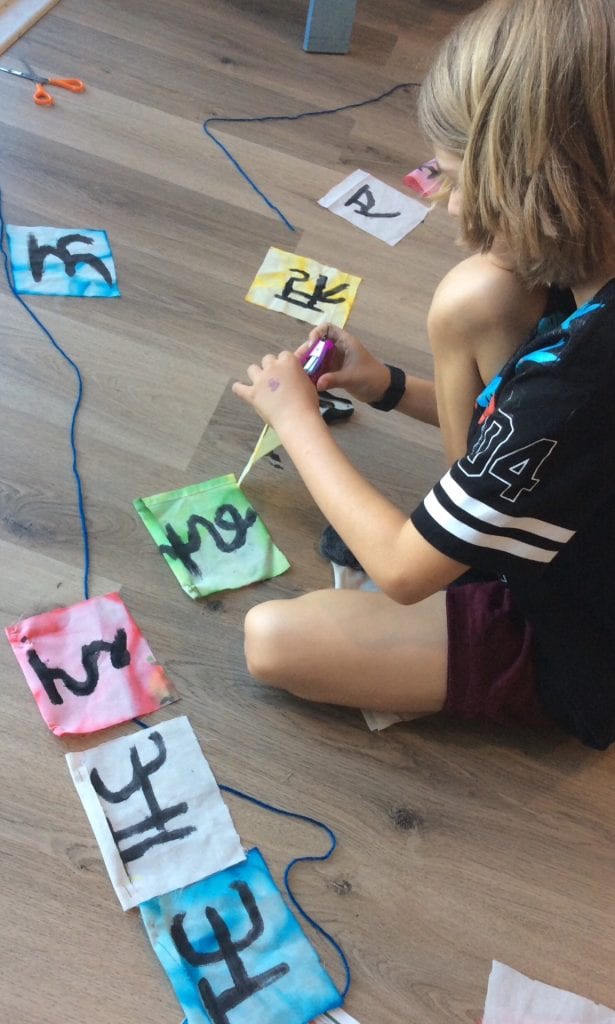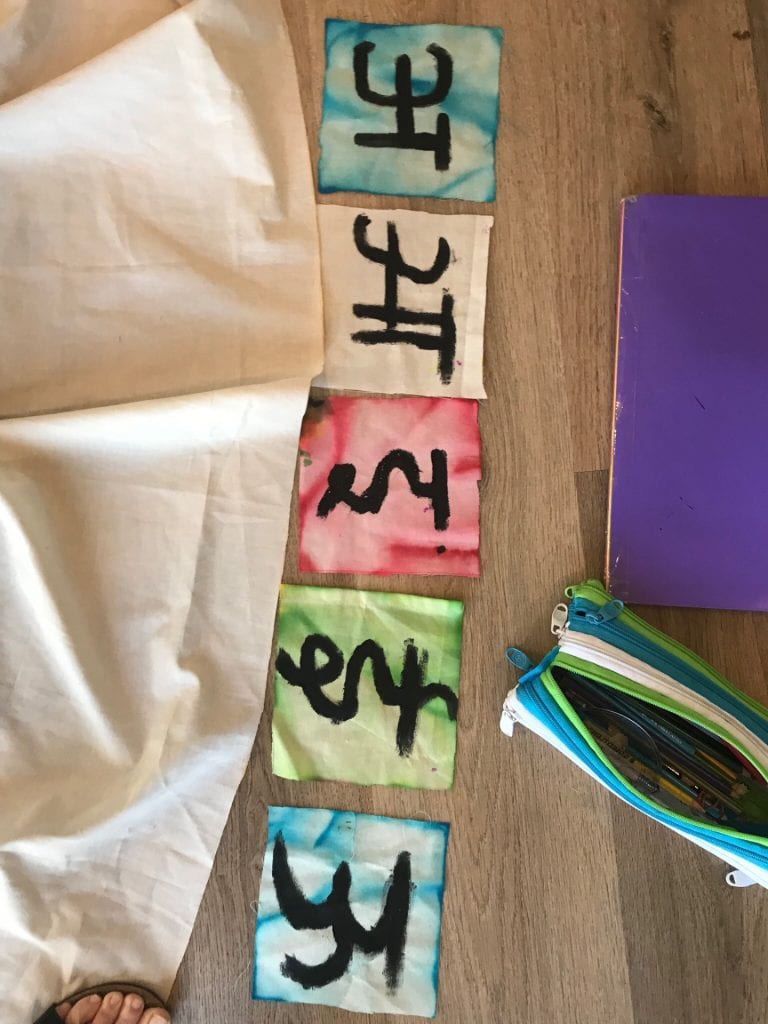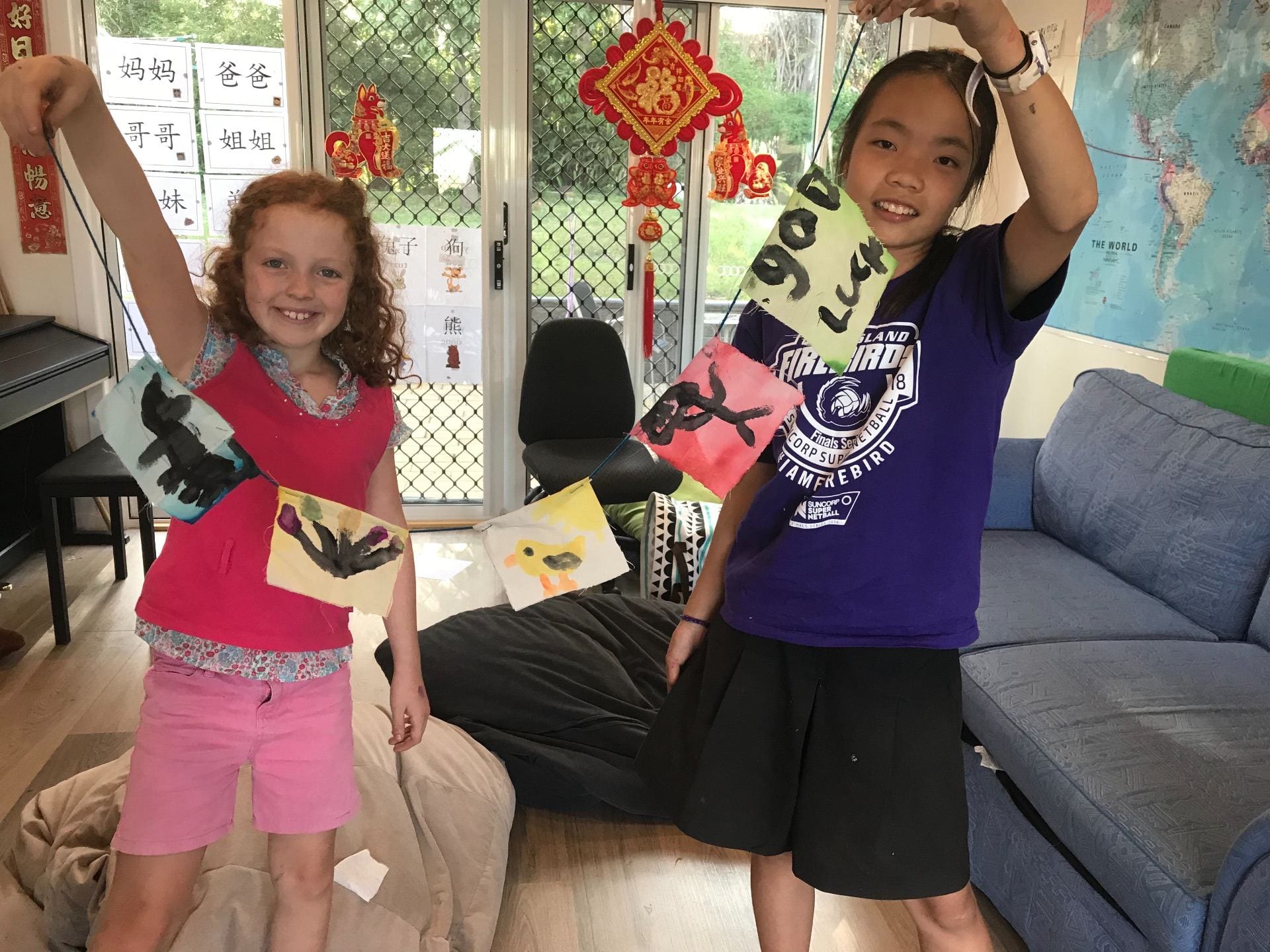We have been learning some Nepali words and phrases over the last few weeks, and are now starting to learn the Devanagari script and Nepali Alphabet 🙂 So kids have been making prayer flags, they thought it would be a nice way to paint the symbols on and hang in our classroom for daily practice 🙂
This activity is not just about the Nepali Alphabet though, ‘how to do’ the activity and the freedom to get things wrong are what make the activity meaningful. In a school environment, a teacher may only have 50 mins class time to run such an activity. So the teacher has to have all logistics worked out, everything measured, cut, prepared in piles, resources ready etc. The kids are given instructions and they just follow. Stepping back and letting the kids work out the logistics takes time, some may say is a waste of ‘learning’ time, but it’s where all the learning takes place 🙂
We first had to think of a way to make prayer flags. After searching many odd bits of material around the house and estimating cost of buying blank prayer flags, we found an old whitish sheet in the cupboard. Then came a Math problem. What size should our prayer flags be to ensure we had around 100, enough for Nepali alphabet and some spares for fun wishes. They measured length and width of sheet, 138 and 110 cm. Lucas remembered on his maths online he had done something by adding all the lengths and widths together, and maybe that would help him figure out our problem. He went onto his maths online program and found that would give him the perimeter. He then looked some more, and recapped the lesson he’d done multiplying length and width, remembering that would give him the area. He calculated 15,180cm square. We needed 100 squares, how would we work out the area of each square, though? Lucas shouted ‘divide the area by 100!’ I was impressed 🙂 So they worked out each square needed a rounded down area of 150square cm to ensure we got 100 flags. But how long should each flag be???
Here is the full video we used :
As well as using the ‘concept’ of the prayer flag as a beautiful way to decorate our classroom and learn the Nepali alphabet, we also thought we would paint some with our personal hopes and wishes for our world, to blow into the wind. Aurora painted symbols to spread her wishes of love, balance, strength, nature and peace.
Australian Curriculum Links
Yr 5/6 Visual Art : Explain how visual arts conventions communicate meaning by comparing artworks from different social, cultural and historical contexts – analysing how symbolic meaning or metaphor is constructed in students’ own artworks and artworks of others.
Math
yr 5 Calculate perimeter and area of rectangles using familiar metric units
Use estimation and rounding to check the reasonableness of answers to calculations
Solve problems involving multiplication of large numbers by one- or two-digit numbers using efficient mental, written strategies and appropriate digital technologies
Use efficient mental and written strategies and apply appropriate digital technologies to solve problem
yr 5/6 Design Technology
Investigate characteristics and properties of a range of materials, systems, components, tools and equipment and evaluate the impact of their use
Critique needs or opportunities for designing, and investigate materials, components, tools, equipment and processes to achieve intended designed solutions
Select appropriate materials, components, tools, equipment and techniques and apply safe procedures to make designed solutions
LOTE (Hindi as no Nepali in Aust Curr) : Convey information about aspects of language and culture in formats to suit different audiences and contexts / Creating and comparing their own examples of particular text genres, such as horoscopes, prayers or weather forecasts explaining their choice of particular language or text organisation
HASS YR 7 describing how harmonious relationships with the natural world were reflected in Indian belief systems (for example, Hinduism, Buddhism and Jainism) (this is very limiting as all outcomes are…but you can work out the connection :-))

